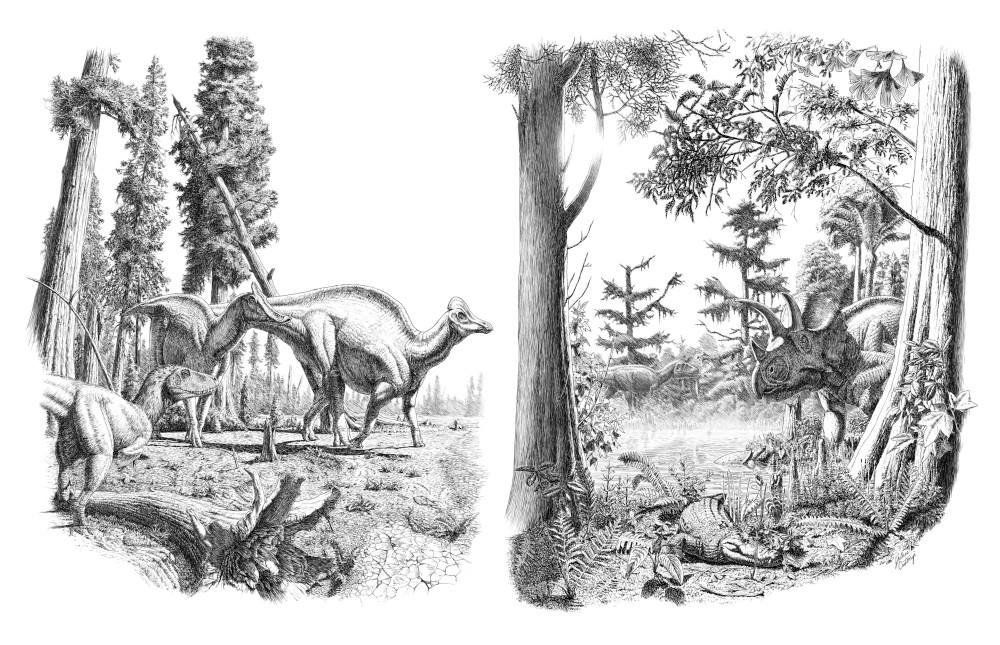Publication of the LGL-TPE in the journal Bulletin of the Geological Society of America on February 10, 2022. CNRS-INSU communication on March 10, 2022.
There is a debate whether dinosaur faunas experienced a long-term decline or were subjected to a rapid extinction pattern prior or at the K-Pg boundary. To address this question, those vertebrate assemblages have been analyzed via models and diversity analyses (e.g. Bonsor et al., 2020; Chiarenza et al., 2019; Sakamoto et al., 2016). An independent way to contribute to the debate is to address whether trophic structure among those assemblages was altered or not prior to the K-Pg boundary. Such a paleoecological approach has received little attention so far. Our team specializes in developing methods and understanding fractionation processes for non-traditional isotopes (e.g. Ca, Mg) in modern and fossil vertebrates, some of them presenting an encouraging preservation potential in the fossil record. Among our recent results, we have revived the importance of calcium isotopes for inferring dietary sources in modern mammalian assemblages (Martin et al. 2018) but also among dinosaur assemblages (Hassler et al. 2018). Here, we present the first calcium isotope dataset for three dinosaur assemblages spanning the end-Cretaceous in Alberta, Canada, allowing to discuss dietary preferences, contributing a complementary step beyond the traditional isotopic approaches represented by oxygen and carbon isotopes. One notable result of our study is the dominant contribution of hadrosaurid prey to the diet of tyrannosaurids when other large herbivorous prey were also available. We aim to foster interest into these new geochemical methods and offer to the paleontological community a new research perspective for exploring how trophic networks evolved across major diversification and extinction events.

Reference : The stability of dinosaur communities before the Cretaceous–Paleogene (K–Pg) boundary: a perspective from southern Alberta using calcium isotopes as a dietary proxy. Jeremy E. Martin, Auguste Hassler, Gilles Montagnac, François Therrien, Vincent Balter. Bulletin of the Geological Society of America, 2022.
DOI : https://doi.org/10.1130/B36222.1






